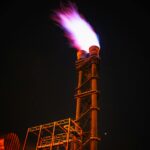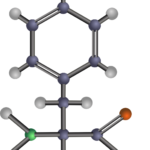In the race against climate change, the chemical industry—a historically emissions-heavy sector—is undergoing a radical transformation. Clean tech startups are pioneering sustainable innovations, from carbon capture to green hydrogen production, aiming not only to reduce environmental impact but to reshape global supply chains. As we enter the final quarter of 2025, several chemical startups are emerging as key players in this green revolution.
This article explores five startups making a significant impact, their cutting-edge technologies, the challenges they face, and how they are poised to redefine the chemical landscape.
1. Greenlyte Carbon Technologies (Germany)
Focus: Direct Air Capture (DAC) + Green Hydrogen By-product
Founded: 2022
Headquarters: Essen, Germany
Greenlyte Carbon Technologies is gaining global recognition for its pioneering work in direct air capture (DAC) using a liquid alkaline sorbent, a process that absorbs carbon dioxide (CO₂) directly from the atmosphere. Unlike traditional carbon capture methods that focus on industrial flue gases, DAC is considered essential for reaching net-zero emissions, especially in sectors where decarbonization is difficult.
Greenlyte’s technology stands out because of its energy efficiency—requiring just ~600 kWh to capture a ton of CO₂, far lower than many competitors. The added advantage? The process produces green hydrogen as a by-product, enabling circular energy solutions.
Why It Matters:
With DAC poised to become a trillion-dollar industry, Greenlyte is well-positioned as one of the most energy-efficient and scalable players. Their pilot facility is already capturing 100 tons of CO₂ per year, and the startup has ambitious plans to scale this to the kiloton level by 2026.
Challenges:
Despite its promise, DAC faces hurdles such as high operating costs, infrastructure needs, and slow regulatory frameworks. However, Greenlyte’s dual-product model (CO₂ + hydrogen) offers a compelling commercial case.
2. Dioxycle (France/USA)
Focus: CO₂-to-Ethylene Electrolysis
Founded: 2021
Headquarters: Paris, France & San Francisco, USA
Dioxycle is targeting one of the most ubiquitous petrochemicals in the world—ethylene, a precursor to plastics, antifreeze, and solvents. Traditionally produced from fossil fuels through steam cracking, ethylene production accounts for massive CO₂ emissions globally.
Dioxycle is disrupting this with a revolutionary electrochemical process that converts CO₂ + water + electricity into ethylene. Using proprietary catalysts and reactors, their system mimics photosynthesis—essentially creating carbon-neutral ethylene.
Why It Matters:
Ethylene is a $100B global market. If Dioxycle can achieve cost parity with fossil-derived ethylene, they could eliminate gigatons of emissions annually. The technology could also be applied to other hydrocarbon synthesis routes, dramatically expanding its scope.
The company is backed by Breakthrough Energy Ventures (founded by Bill Gates), giving it not just funding but validation from major climate-tech investors.
Challenges:
Scalability, energy input, and system stability are key challenges. Additionally, widespread adoption will depend on electrification of chemical plants and integration with renewable energy sources.
3. Twelve (USA)
Focus: CO₂-to-Products via Catalytic Conversion
Founded: 2015
Headquarters: Berkeley, California
Formerly known as Opus 12, Twelve is a veteran in the carbon tech arena. The company develops electrochemical reactors that convert CO₂ into syngas, methane, ethylene, and even jet fuel. Their vision is simple but profound: turn emissions into essential products, creating a closed-loop carbon economy.
Twelve’s technology leverages proprietary metal catalysts and modular reactor designs. These can be plugged into industrial CO₂ streams or used in DAC settings to transform emissions into valuable outputs.
Why It Matters:
Twelve already has strategic partnerships with Mercedes-Benz, Shopify, and the U.S. Air Force. Its ability to integrate into existing manufacturing pipelines makes it a practical solution for hard-to-abate sectors like aviation, automotive, and chemicals.
With rising carbon prices and pressure to decarbonize supply chains, Twelve is helping global manufacturers meet their climate targets—while creating entirely new carbon-negative products.
Challenges:
Electrochemical processes are power-hungry, requiring stable and cheap renewable electricity. Catalyst degradation and scaling large reactor arrays are also technological barriers.
4. Monolith Inc. (USA)
Focus: Methane Pyrolysis for Clean Hydrogen + Carbon Black
Founded: 2012
Headquarters: Lincoln, Nebraska
While many startups aim to eliminate fossil fuels, Monolith takes a more transitional approach—making fossil use cleaner. Their innovation lies in methane pyrolysis, a process that heats natural gas in the absence of oxygen to produce hydrogen and solid carbon.
Unlike steam methane reforming (SMR), which emits CO₂, Monolith’s process emits no greenhouse gases. The solid carbon is turned into carbon black, a vital additive in tires, pigments, and plastics—traditionally made from heavy oil with a high emissions footprint.
Why It Matters:
Hydrogen is seen as a cornerstone of the clean energy future. Monolith’s method delivers clean hydrogen at lower costs compared to electrolyzers while simultaneously producing valuable industrial materials. It’s a compelling business case and a bridge toward fully renewable hydrogen.
Monolith has received investments from SK Group, NextEra Energy, and the DOE’s Loan Programs Office, signaling confidence in its technology.
Challenges:
Although cleaner, Monolith’s method still relies on natural gas, which raises concerns about methane leakage and long-term sustainability. Additionally, scaling the high-temperature pyrolysis reactors requires significant capital and technical innovation.
5. Deep Sky (Canada)
Focus: Carbon Removal Infrastructure (DAC, Ocean Capture, Mineralization)
Founded: 2023
Headquarters: Montreal, Canada
Deep Sky is building carbon removal campuses—integrated facilities for capturing CO₂ from the air and oceans and sequestering it permanently through mineralization or geologic storage. Unlike pure-tech companies, Deep Sky positions itself as an infrastructure developer, aggregating technologies from others (e.g., Carbon Engineering, Heirloom) into deployable projects.
They aim to remove 200,000–300,000 tons of CO₂ per year per facility, starting in Québec, leveraging Canada’s clean hydro power and abundant mineral resources for carbon storage.
Why It Matters:
Carbon removal is now widely seen as necessary to offset emissions from aviation, agriculture, and legacy pollution. Deep Sky provides a scalable, investable model for the carbon removal-as-a-service economy. Their platform approach allows them to pivot and integrate best-in-class tech as it matures.
They’ve already received backing from major climate-focused VC firms and plan to become a global carbon removal operator, much like a renewable utility.
Challenges:
The main hurdle is cost—carbon removal still costs hundreds of dollars per ton. Achieving low-cost, high-volume, verifiable storage will be crucial. They also face logistical, political, and regulatory barriers to large-scale deployment.
Why These Startups Matter
While their technologies differ, these five startups share common attributes that position them as leaders in 2025’s clean tech revolution:
Decarbonization of core materials and processes: Each addresses major carbon sources—ethylene, hydrogen, fuels, and industrial feedstocks.
Commercial viability: Rather than futuristic concepts, these companies are focusing on real-world deployment, often with industrial partners.
Scalability: Their solutions are designed to integrate into or replace existing infrastructure—critical for widespread adoption.
Capital attraction: Backed by prominent VCs, corporates, and government funding, they have the runway to push through early-stage challenges.
Looking Ahead: What Will Define the Winners?
As climate tech continues to mature, several factors will determine which chemical startups rise to the top:
Energy Source and Efficiency: Technologies that pair well with renewable energy and demonstrate low energy intensity will scale faster.
Policy Alignment: With regulatory frameworks like the U.S. Inflation Reduction Act and EU Green Deal driving change, startups that align with policy incentives will have a head start.
System Integration: Those that integrate seamlessly into existing supply chains—without requiring a complete overhaul—will see faster adoption.
Verified Climate Impact: As carbon accounting becomes more rigorous, startups must prove real, durable emissions reductions or removals.
Conclusion
The chemical industry is at a tipping point. With environmental pressure mounting and the global economy demanding cleaner alternatives, these startups are more than just niche players—they’re catalysts of a broader transformation.
Whether by turning CO₂ into building blocks, making clean hydrogen, or developing scalable carbon removal hubs, these companies represent a new paradigm: one where chemistry and climate solutions converge.
As we look to 2030 and beyond, expect these innovators not just to disrupt the chemical sector, but to redefine what’s possible for a truly sustainable future.















